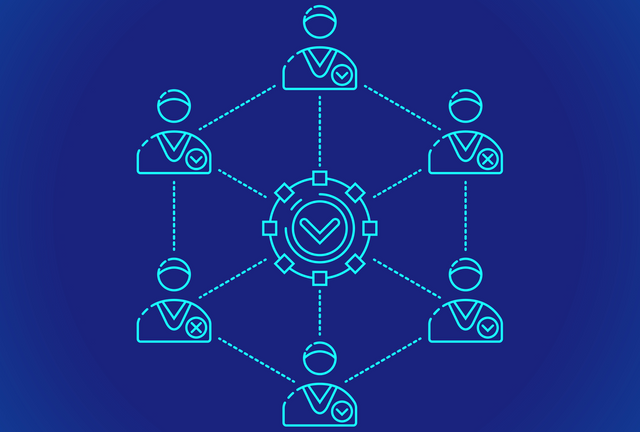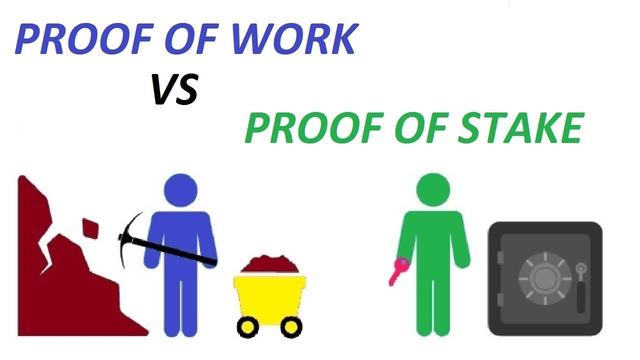Steemit Crypto Academy Season 3 Beginners' course task 4 by @sapwood : Different types of Consensus Mechanisms
Hello steemian ...
This is my new post in the Steemit Crypto Academy community season 3, on this homework I will be working on Beginners' course task 4 by professor @sapwood with the theme "Different types of Consensus Mechanisms”.
The most basic thing about blockchain systems is decentralized systems, of course, decentralized systems do the opposite of centralized systems. In the blockchain system, there is a consensus mechanism where it aims to synchronize every node that is formed from every transaction activity in the blockchain system.

SOURCE:https://openledger.info/insights/blockchain-consensus/
Consensus means agreement, in the blockchain world consensus is an agreement about a transaction that is generated through a fairly complex algorithmic process. Even in PoW or PoS consensus is a very important component in the occurrence of every transaction.
For a more specific explanation of this, I will explain it based on the task below:
What is the difference between PoW & PoS? Advantages & Disadvantages? Which one is better in scaling Capacity? Examples?
1. Difference between PoW & PoS

SOURCE:https://medium.com/coinmonks/blockchain-finality-pow-and-pos-35915a37c682
- PoW
PoW stands for Proof Of Work which is a type of consensus mechanism with a pioneering type. This pioneering type of consensus mechanism is the consensus mechanism underlying the bitcoin asset, any blockchain projects that follow this mechanism will be affected by the bitcoin system. Like now when bitcoin price movements will affect changes in most other crypto assets. This is because most crypto assets other than bitcoin adhere to the same consensus mechanism, namely the pioneer type.
To generate blocks in PoW, every miner must be able to solve complex mathematical problems and will continue to change over time in generating blocks in the blockchain system. The math problems given are so complex that the miners mostly guess and hope that they will get lucky. Unfortunately, the guesswork makes this system absorb more power and requires a device that has a capable performance, this is what makes miners have the quality and performance of their high-end pc. - PoS
PoS stands for Proof Of Stake, it is a newer consensus than Pow. In generating blocks in this PoS system, miners don't have to struggle to solve math problems because there are no math problems. PoS has its way of generating blocks on blockchain-based on the number and length of time a node keeps its assets or coins. Each node that has more coins and keeps it for a long time will get higher points. There's a lot of fun in this PoS mechanism, such as the many rewards that are given to miners.
The reason why PoS systems prioritize the nodes with the longest number and retention times is that these nodes will directly contribute to increasing the performance and value of the coin. Because it is easier and less complicated, PoS systems are much more energy-efficient and do not require miners to have high-end PC devices.
The PoS system does not require miners to be able to create and produce blocks. They have a validator that works for producing blocks.
2. Advantages and disadvantages of PoW and PoS
In its development in the digital world, of course, between PoW and PoS each has its advantages and disadvantages, namely:
Advantages
PoW
- The advantages of PoW are not too many, but among them is that PoW is easy to implement, ie when the first miner solves a complex mathematical problem, then he will receive a reward and have the authority to produce the next block.
PoS
- it is Environmentally friendly and energy-efficient because it does not require so much power.
- Not complicated (no need to solve math problems)
- it is cheaper because you don't have to have a high-end PC device.
Disadvantages
PoW
- Expensive, because of its complicated system, PoW requires miners to have high-end pc devices.
- Consumes a lot of energy, because solving complex math problems takes a long time so it absorbs a lot of power.
PoS
- Can be easily centralized, this is because the PoS system is somewhat different from blockchain, the thing that makes PoS still tied to the blockchain system is because their coins are installed in the blockchain system.
3. PoW and PoS examples
Examples of PoW coins are Bitcoin (BTC) and Ethereum (ETH). An example of a Pow system is a hashcash system, this system is quite popular among bitcoin miners. This hashcash works for complex code using partial hash inversion technology. at a higher scale, hashcash can solve even very complex code as long as we have a device that has capable computing.
Examples of PoS Dash (DASH) and NEO (Neo) coins. PoS system is very efficient than PoS. the mining process in this system adjusts to the strength of the mining rig so that the laws of the jungle-like PoW do not apply.
CONCLUSION
PoS has several important advantages over Pow, including being cheaper and more economical. This makes PoS more attractive because it can be affordable for more users. However, PoS still has to improve the system and its performance to be even better and able to adapt to various conditions.
This is everything I know about “Different types of Consensus Mechanisms”, I'm writing this based on some of the references I've studied.

tks prof, i'll be better soon